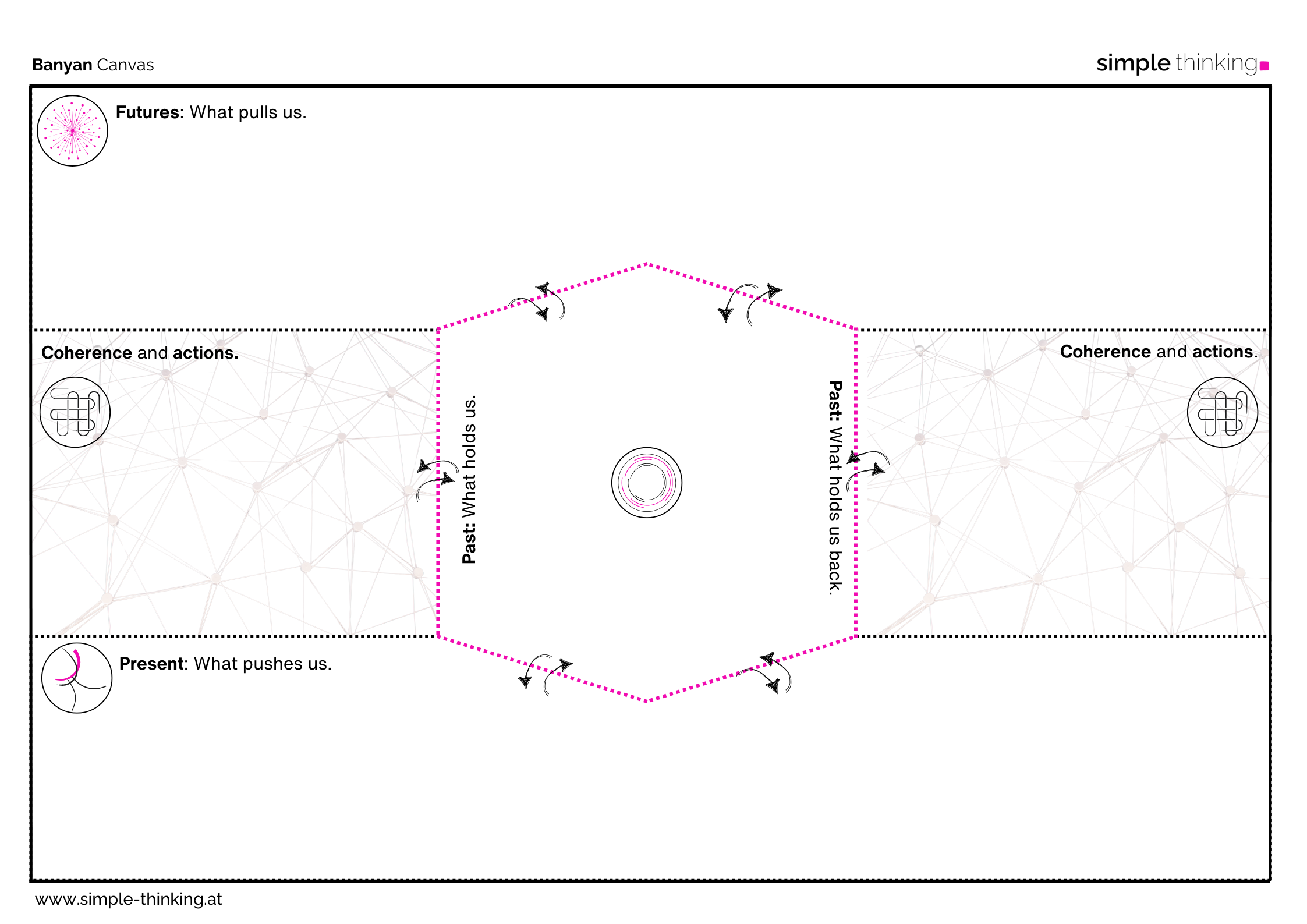From Complexity pressure to Complexity Treasure
In a world full of uncertainties, dynamic changes, and profound challenges, classical approaches to corporate management and strategy reach their limits. Complexity is not a problem to be solved – it is an inevitable characteristic of modern systems. However, it also provides the foundation for innovation, resilience, and growth when organizations learn to work with it instead of ignoring or oversimplifying it.
This pinkpaper introduces the Generative Strategy – an innovative framework that helps companies find orientation in complexity and actively shape new paths. It connects the past, present, and futures in a dynamic process that creates clarity, coherence, and the ability to act.
Futures Work
Begins with the question of which direction the organization senses and wants to pursue. The focus is on developing a collective understanding of possible directions and using this sense as guidance for the present. This work strengthens resilience and enhances the ability to actively and flexibly adapt to change.
Selective Heritage
Reflects on the past to decide which values, strengths, and principles the organization wants to carry into the future – and which should be let go.
Present Work
Analyzes trends, signals, and activities to derive clear actions and priorities for the current context.
Alignment through Weaving
The connection of futures, past, and present creates an action net that combines stability and flexibility, enabling organizations to act effectively in complex environments.
The Banyan Canvas
The Banyan Canvas, designed by simple thinking is the central tool of Generative Strategy, designed to systematically weave the three temporal dimensions - futures, past and present - together.
The Banyan Treeperfectly symbolizes Generative Strategy: while it retains a hierarchical structure with its central trunk and overarching canopy, its aerial roots create an underlying rhizomatic organization.
These roots grow outward, anchor back into the ground, and form new trunks, symbolizing the iterative and interconnected nature of progress. This duality reflects how organizations can balance stability with adaptive, decentralized networks, weaving past, present, and future into a dynamic and resilient whole.
It provides a clear structure to make relevant elements visible and derive targeted options for action. The process is iterative and participatory, ensuring that diverse perspectives and new signals and insights are continuously integrated.

What Makes Generative Strategy So Special?
Coherence through Interweaving
The synthesis of past, present, and future creates a network of action that combines stability and flexibility.
Plausibility Instead of Probability
Instead of relying on precise predictions, Generative Strategy uses narrative and intuitive approaches that are better suited to complex environments.
Participation for Breadth and Depth
Diverse perspectives and experiences are integrated to enhance decision quality and reduce blind spots.
Why This Strategic Approach Makes Sense
This strategic approach offers a new way to work with complexity rather than fighting or oversimplifying it. By interweaving past, present, and future, it creates clarity and coherence in a dynamic environment. Instead of rigid goals, the focus is on directions – the ability to sense possibilities and adapt flexibly. This enables organizations to build on their strengths, consciously transform limiting patterns, and address current challenges simultaneously. The approach not only strengthens resilience but also enhances the capacity for action by providing orientation without limiting necessary flexibility.
Generative Strategy helps companies in a complex world to:
- develop a sense of directions that serve as guidance for decisions,
- prioritize action options,
- foster resilience and adaptability,
- and create an action net that strengthens collective energy and agency.
In summary: Generative Strategy is not a static tool or a linear method – it is a frame for thinking that helps organizations act effectively and purposefully in dynamic environments. This pinkpaper shows how to view complexity not as a burden but as an opportunity to actively shape the future of your organization.
